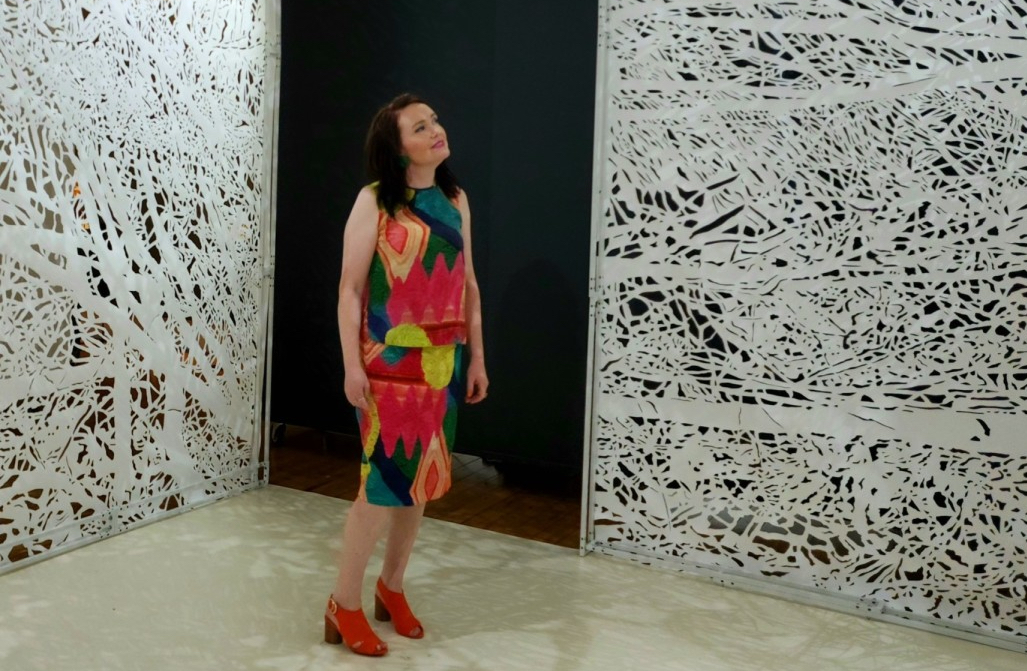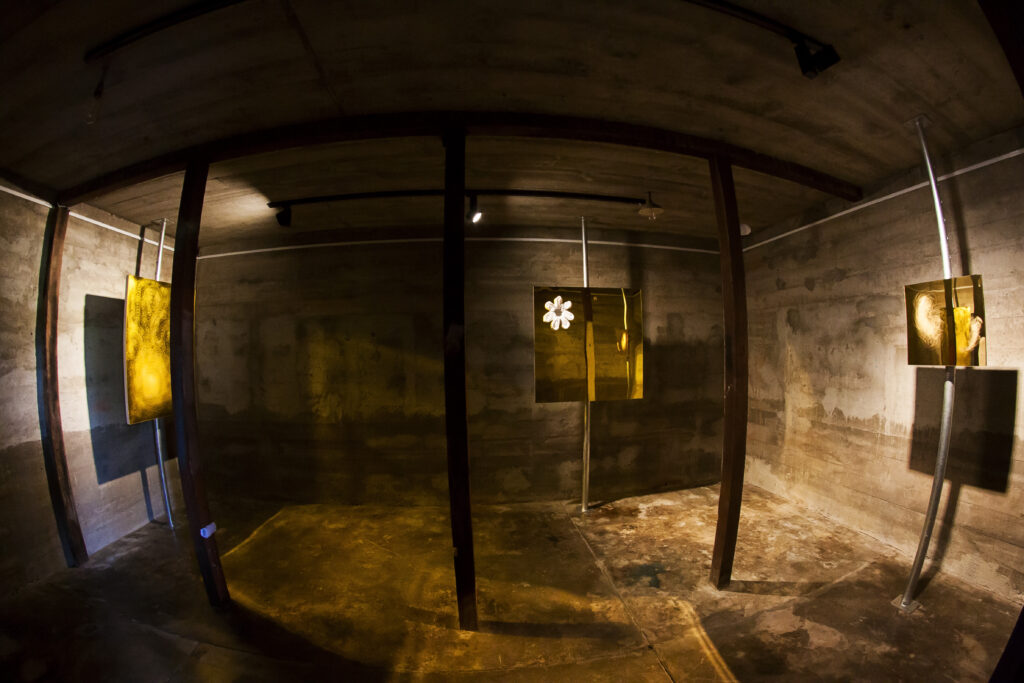
Nestled away in a small concrete room which was once a bomb shelter for archives in the 1940s, is the soft glow of Tay Haggarty’s latest installation, Mock Sun for an Inverted Daisy. To have a mock sun is in a way to fabricate it, bring it into being. And for that sun to be for an “inverted daisy” perhaps reclaims ideas of sexual inversion alongside flowery descriptions of queerness historically weaponized derogatively against queer people. A “mock sun for an inverted daisy” manifests the warmth of not just living but thriving in one’s queer body and gives kindness to its existence.
Watching people encounter the shelter is almost as enjoyable as taking it in on your own. Despite the cool temperature of the day, the shelter’s glow appears to bring warmth to all those who step into it. Looking around, there are three installed artworks which stand along the outer edges of the room. These rectangles of tinted yellow acrylic are fixed to wooden backboards connected at eye height to metal scaffolding that reaches floor to ceiling. They have a mirror-like effect as the arranged lighting reflects gold off their surfaces. These works – seamlessly inserted into space – seem to be at home in the rusty, worn interior of the shelter. While each structure faces inwards towards the viewer, it stands away from the wall itself, allowing one to observe the works from all angles and enquire into its construction. These three works are part of a larger series by Haggarty titled Sun On Bare Back (SOBB) first created in 2023 when the artist had yet to receive gender affirming care. The artwork in the space bearing the same title sits to the left of the room, an assemblage of softly etched swirls that dance across the surface of the acrylic, chaotic and free despite being confined to its edges, subtly echoing Haggarty’s performance-based practice.
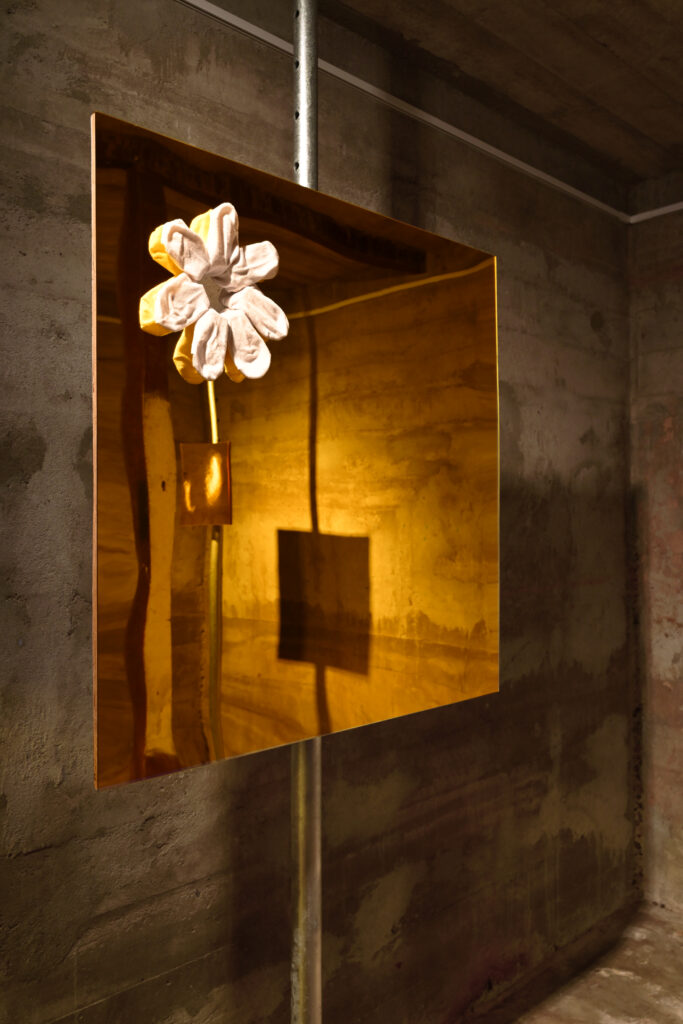
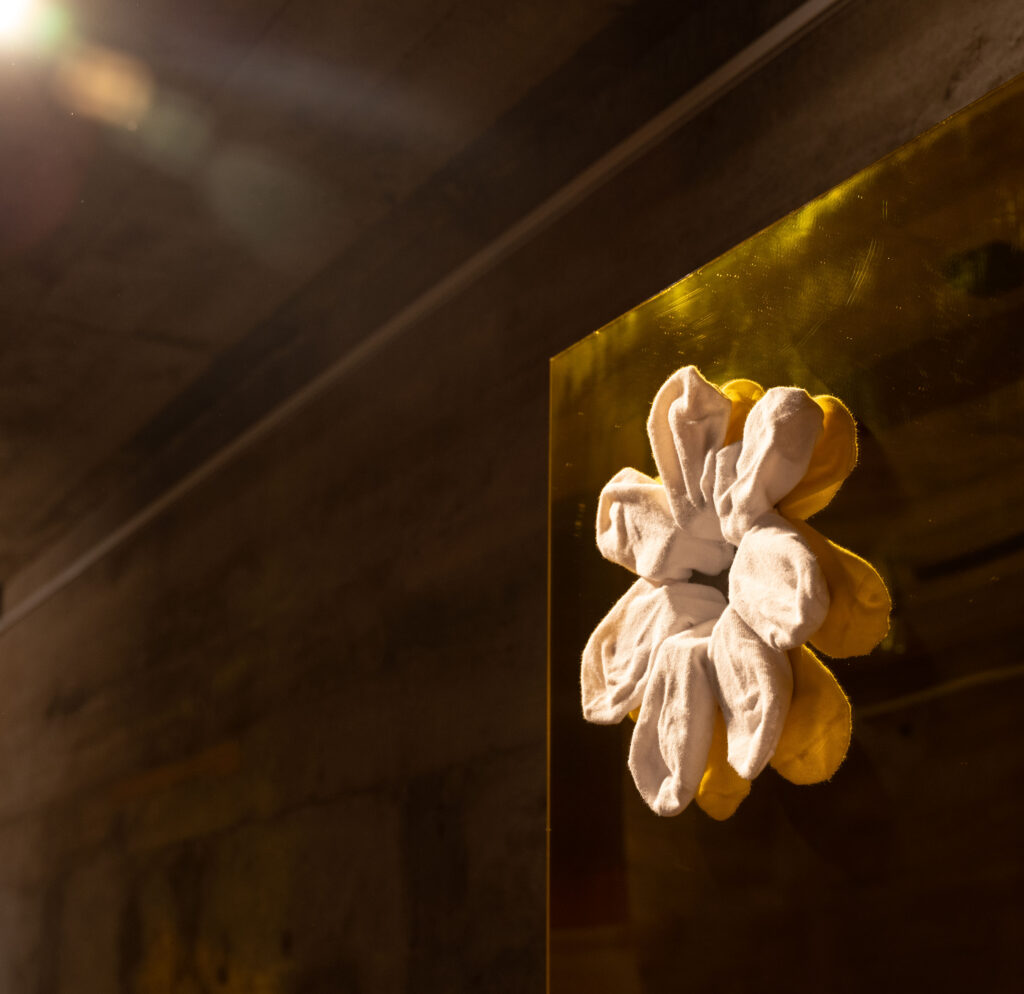
Feelings of curiosity, happiness, connection, and knowing, can be seen crossing viewers’ faces as they stare into their yellow reflections, or towards others in the room. Each individual structure seems to me a portal of light in the late afternoon, seeping through patches in the overgrowth above. There’s a certain vulnerability in these works given the yearning the artist must have felt when beginning this series back in 2023. That is, a yearning for the feeling of the sun on a shirtless back; to share a desire so close to one’s heart with a public audience, inviting them to come in and bask in that golden-hued feeling. Now recontextualized two years later in this space, Mock Sun for an Inverted Daisy shines with strength and hope for the joyful life that can be lived after receiving gender affirming care. Across the room sits another, smaller acrylic sculpture titled SOBB (2025) and in every sense of the word it is a younger version of Sun On Bare Back. In these two works, Haggarty embeds layers of meaning between the softly ground surfaces of the acrylic. The mirror-like quality offers a private moment; this subtly includes the viewer in the artist’s message and prompts reflection, giving them an opportunity to connect deeply with the work based on their own lived experiences.
The centrepiece of Haggarty’s installation returns to the motif of the daisy. Mock Sun For An Inverted Daisy (2024) bears a curious adornment. In the top left of this work, a fist-sized hole has been carved out, surrounded by seven crisp white ankle socks which have been placed to create what resembles a flower, a daisy. With its missing core the daisy is inverted, yellow centre bursting out to fill the room with its warm light. Mock Sun For An Inverted Daisy is not the only work in the shelter featuring crisp white socks. Socks are a surprisingly coded symbol of gender performance, different cuts of socks indicating different genders in heteronormative society, socks used to fill bras and pack underwear. As the daisy is lined with this item of clothing, two bundled pairs of socks furthermore find themselves delicately placed inside and on peaks of the wooden beams which uphold the ceiling of the shelter, naturalised into the architecture of the room. Each work in the room acts as its own performance of joyful resistance against a world that has historically oppressed and even denied queer existence. Furthermore, by placing these works in a bomb shelter that was historically used to protect and store archives, Haggarty re-inserts queer bodies and joy into the archive. In a poetic way, Haggarty shows that queerness is beautiful and bright and when people are able to be their true selves, it can always be golden hour.
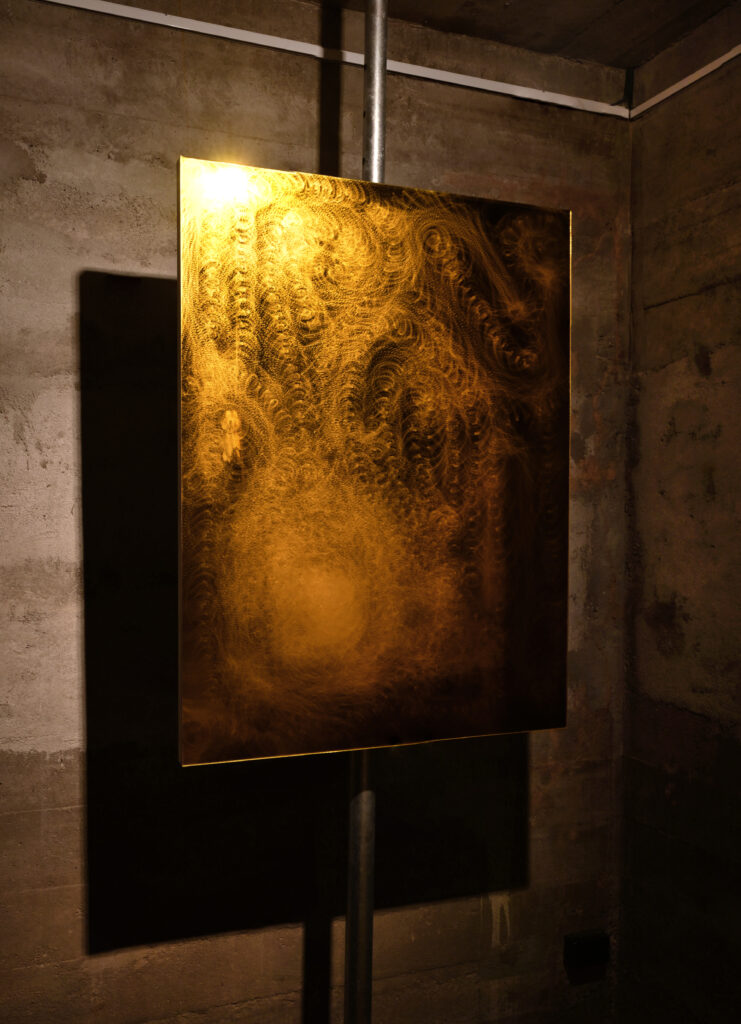

Felix Reid is an arts worker based in Meanjin. They are currently completing their undergraduate degree in Anthropology and Art History at the University of Queensland.



